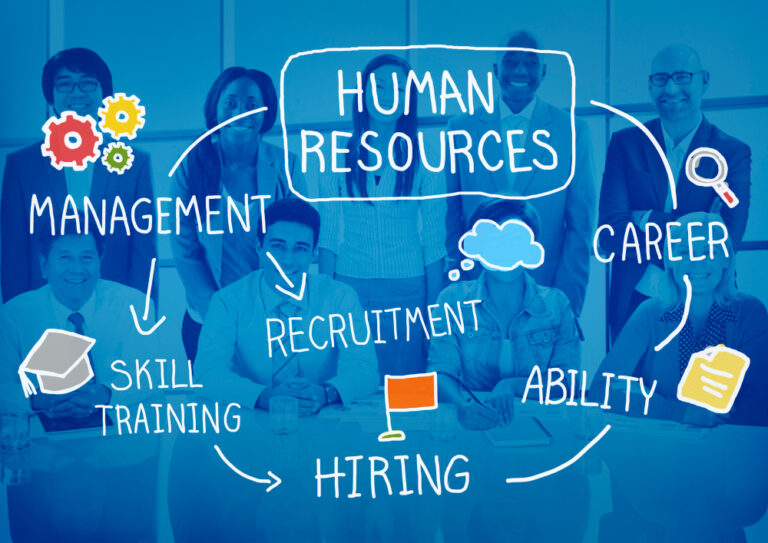Functions of Staffing: Building Organizational Success in the Modern Era

Staffing is far more than just hiring it’s the strategic backbone of sustainable business performance. With rising competition, evolving workplace expectations, and complex compliance demands, organizations in 2025 must view staffing as a continuous process: planning, sourcing, developing, managing, and retaining the right talent to achieve business goals.
Research reveals that companies with mature staffing functions are 22% more likely to outperform their peers in revenue growth and innovation. In this comprehensive guide, we’ll demystify every critical function of staffing, highlight best practices, and help you see where advanced staffing can transform your organization.
What Is Staffing?
Staffing is the end-to-end process by which organizations acquire, deploy, develop, and retain employees. It starts even before a job is posted encompassing strategic workforce planning, role design, candidate attraction, employee development, retention, and succession planning. Effective staffing is both proactive and iterative: it anticipates company needs, responds to talent shifts, and ensures a continuous alignment between business priorities and workforce capabilities.
Staffing is essential for:
- Maintaining optimal team performance
- Preventing costly over- or under-staffing
- Supporting employee satisfaction, engagement, and advancement
- Ensuring legal and ethical compliance at every stage
For a granular understanding of workforce optimization, explore what is manpower planning.
Key Functions of Staffing Explained
Each Staffing function described here plays a distinct, vital role in the employee lifecycle. Together, they create a resilient, high-performing organization.
1. Workforce Planning
Workforce planning is the bedrock of modern staffing. It involves analyzing current personnel, forecasting future talent needs, and determining the skills, roles, and headcount necessary for achieving business goals. This function assesses internal and external labor trends, succession needs, attrition risks, and the impact of new projects or technologies. Strategic workforce planning enables companies to proactively close future skill gaps and manage turnover.
For a deeper dive, visit What is Manpower Planning?
2. Recruitment and Selection
Recruitment is the process of attracting and sourcing potential candidates, while selection chooses the best individual for the job. This includes writing clear job roles, advertising in appropriate channels, leveraging recruitment models (internal, agency, campus, employee referral, RPO, etc.), screening applications, interviewing, and using assessments or psychometric tools. Modern recruitment relies on employer branding, data-driven sourcing, and candidate experience optimization.
Learn more about various models in 10 Different Types of Recruitment Models and review broader hiring distinctions at What are the Different Types of Recruitment?.
3. Orientation & Placement
Once selected, orientation ensures employees feel welcomed while placement assigns them to the right department, team, or supervisor. The process involves company introduction, legal paperwork, cultural familiarization, and supported integration into their role. Effective orientation programs reduce early attrition, boost engagement, and help new hires contribute quickly.
4. Training and Development
Today, upskilling is a key competitive differentiator. Training and development address current skill gaps and anticipate future role demands due to technology and business evolution. This includes onboarding training, role-specific learning, soft-skill workshops, leadership development, cross-functional assignments, and succession planning. Investing in continuous learning not only improves productivity but also encourages loyalty.
5. Performance Appraisal
Regular performance appraisal provides structured evaluation and feedback for employees. It covers annual reviews, 360-degree feedback, real-time check-ins, and goal-setting. Appraisals clarify expectations, identify high-potential talent, correct underperformance, and align personal objectives with organizational goals. They are also the basis for merit-based rewards, promotions, and personal development plans.
Discover key assessment metrics in Choosing the Right Recruitment Partner: Key Metrics Indian Employers Should Track in 2025.
6. Compensation & Benefits
This function involves designing and administering salary structures, incentives, perks, health/wellness benefits, and retirement plans. A robust compensation strategy balances internal equity, market competitiveness, and compliance with wage regulations. Benefits management now includes flexible working support, ESOPs, healthcare, childcare, and more.
Understand pay structure impacts in Difference Between Company Payroll and Third-party Payroll.
7. Employee Retention & Engagement
Retention strategies focus on fostering a workplace where top talent wants to stay. Tactics involve career advancement opportunities, continuous learning, meaningful work, engaged leadership, and regular recognition. Engagement surveys, pulse checks, and feedback channels keep the work environment vibrant. High retention lowers turnover costs and preserves vital institutional knowledge.
8. Promotion & Transfers
Promotion is the advancement of employees to more responsible or rewarding positions. Transfers involve moving employees across locations or business units as workforce needs change. A transparent process for promotion and transfer motivates employees and ensures workplace agility. Policies should be equity-driven and communicated openly to avoid perceptions of bias.
9. Succession & Talent Management
Talent management goes beyond the immediate filling of vacancy; it ensures there’s a pipeline of capable leaders and specialists ready to step in when key roles become available. Succession planning identifies future critical roles and matches them with rising talent, using assessments, mentorship, and targeted growth paths.
For senior hiring strategy, see Future of Executive Search: Trends to Watch in 2025.
10. Legal Compliance
Staffing must comply with an ever-growing landscape of labor laws, anti-discrimination rules, payroll norms, and reporting regulations. Legal compliance encompasses contract terms, equal opportunity standards, wage-hour laws, and now, digital workforce rules. Proactive compliance management minimizes workplace disputes and ensures sustainable, ethical practices.
For comprehensive compliance know-how, visit What Are Different Types of Compliance?
Why Staffing Matters: Key Benefits for Modern Organizations
Business Continuity
Predictive staffing eliminates disruption by ensuring business critical roles are always covered.
This means that by proactively analyzing and planning your talent needs, you avoid sudden gaps in key positions—even if someone unexpectedly resigns or is on extended leave. With the right forecasting and talent pool, core functions continue seamlessly, minimizing workflow interruptions and helping the business deliver on commitments without delays.
Improved Productivity
Employees in roles suited to their skills and aspirations produce better outcomes, faster.
When staffing ensures the best fit between a person’s abilities/interests and their job, employees work more efficiently and take initiative. They’re more motivated and competent, which leads directly to higher quality output, innovation, and faster completion of tasks and projects.
Cost Reduction
Proper planning controls labor costs and minimizes expensive rapid or reactive hiring.
Advance staffing strategy means you don’t have to scramble or pay a premium to fill urgent vacancies, nor do you inadvertently maintain excess staff. You hire the right number of people at the right time, control overtime, and avoid last-minute recruitment fees, saving the company significant money over time.
Talent Agility
Staffing adapts quickly to changing market trends and workforce needs, supporting business transformation.
A flexible staffing process can respond to new technologies, evolving customer demands, or strategic pivots. This agility allows rapid upskilling, redeployment, or hiring for new skill sets—so your business isn’t held back by outdated capabilities.
Enhanced Engagement & Wellbeing
Better staffing means happier, more loyal employees and stronger organizational culture.
When teams are well-staffed and people aren’t overloaded or misplaced, morale rises. Employees feel valued, are less likely to burn out, and more likely to recommend your company as a great place to work. This fosters loyalty and a collaborative, positive workplace.
Risk Mitigation
Proper staffing ensures legal compliance, protects against lawsuits, and reduces regulatory fines.
By adhering to labor laws, diversity mandates, and fair employment practices, proper staffing reduces the risk of non-compliance penalties and costly litigation. It means employment contracts, job descriptions, and HR processes all meet legal standards, closing the door to potential disputes.
Strategic Growth
Well-managed staffing underpins organizational expansion, digital initiatives, and future leadership.
If you want to expand into new markets or roll out new products, you need the right people ready to support that growth. Well-managed staffing ensures a steady supply of leaders and specialists—so you can seize new opportunities, scale reliably, and future-proof your company against competitive threats.
Frequently Asked Questions (FAQ)
-
What is the importance of workforce planning in staffing?
Workforce planning aligns business goals with human resource needs, forecasting skill requirements and optimizing hiring schedules. It prevents both under- and over-staffing and supports smooth project delivery and business continuity.
-
How do recruitment and selection differ?
Recruitment attracts candidates to apply, while selection chooses the best fit through assessments and interviews. Both are essential, but selection is where choices are finalized.
-
What makes employee orientation crucial?
Orientation transforms newcomers into productive team members, speeds up adjustment, and lowers the risk of early exits by helping new hires feel valued from day one.
-
Why is legal compliance integral to staffing?
Non-compliance with labor laws, payroll rules, or diversity mandates can result in financial penalties, brand damage, or even business closure. Legal compliance is the basic foundation of ethical staffing.
-
How does effective staffing impact retention and engagement?
Targeted hiring, development, and rewards lead to a positive work environment, higher employee satisfaction, and significantly lower turnover saving companies both time and money.
Conclusion
Mastering the functions of staffing is essential for businesses that want to thrive in a rapidly changing landscape. From careful planning to employee development, continuous performance management, and strict legal adherence, every stage of staffing drives long-term results. If you want to future-proof your workforce, ensure seamless compliance, and build a culture of success, the right staffing partner makes all the difference.
Reinforcement Consultants brings expert guidance and tailored solutions to streamline every phase of the staffing process from initial workforce analysis to executive recruitment and ongoing compliance. Let us help you build, manage, and lead the team your business needs to succeed.




